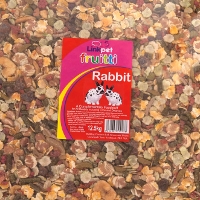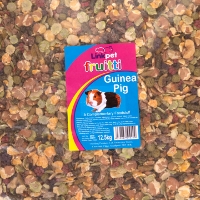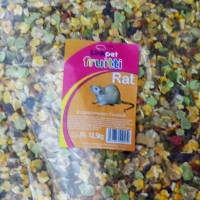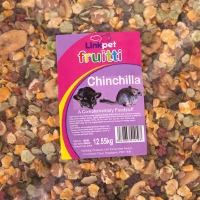- Home
- FAQs
- Customer Video Gallery
- Customer Photo Gallery
- Bird Facts
- Bird Food Blog
- Bird Information
- Feeding Advice
- Small Animal Information
- A to Z of Guinea Pigs
- A to Z of Hamsters
- A to Z of Rabbits
- Basic Care for Guinea Pigs
- Basic Care for Hamsters
- Basic Care for Rabbits
- Basic care for Chinchillas
- Basic care for Ferrets
- Basic care for Gerbils
- Basic care for Mice
- Basic care for Rats
- Buying a Healthy Small Animal
- Does your Reptile need a Licence
- Equipment for Ferrets
- Equipment for Hamsters
- Equipment for Mice
- Equipment for your Chinchilla
- Equipment for your Gerbil
- Equipment for your Guinea Pig
- Equipment for your Rabbit
- Keeping a House Rabbit
- Dog Information
- Cat Information
- Customer Information
- Fat Balls
- Suet Pellets
- Straights
- Seed Mixes
- Suet Treats
- Mealworms
- Bird Feeders
- My Account
Buying a Healthy Small Animal
Don’t let your heart rule your head when it comes to buying a new pet. Find the healthiest, happiest companion you can – after all, you’re going to be spending a lot of time together!
Planning to purchase an animal companion is an exciting time, but it can be all too easy to buy in haste and repent at leisure. To avoid falling into this trap, follow our four steps to success in choosing your perfect small pet partner.
1. Take your time
Key points to note in your prospective ownership equation are:
2. Where to obtain your pet
The species of small animal you are looking for will dictate to some extent where you obtain him; there are three main sources:
Once you have an idea about which small animal you would like to keep, read up about your chosen species to familiarise yourself with what to expect if you own one.
Speak to breeders, owners and reputable pet shop owners to gain more insight into whether your chosen pet would actually choose you as his owner! Gaining as much information as possible will help you identify any potential problems with your new pet or his care requirements.
Information leaflets can usually be found at local pet stores, your library should have a good selection of book titles – and don’t forget to keep coming back to Wetnose to find out more!
3. What should I look out for?
No matter where you decide to buy your pet from, the following tips apply:
Recommendation:
Animal health:
Before making your final decision, ask if you can examine your prospective pet(s) and check the following:
Ask your pet shop if they hold animals for a quarantine period before they are put on display for sale. In doing this, a pet store may detect any signs of illness before the animals are sold and take appropriate action. Find out what a pet store’s policy is regarding any pet who may become sick following purchase.
Try to avoid homing a sick or dejected animal, however tempting it may seem. This will only encourage the supplier to continue selling animals who are not fit and healthy.
Environment:
You should look for:
4. What should I do once I have decided upon my new pet?
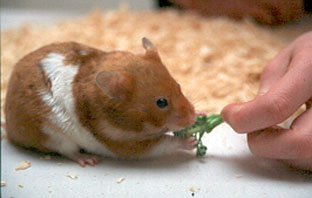
Planning to purchase an animal companion is an exciting time, but it can be all too easy to buy in haste and repent at leisure. To avoid falling into this trap, follow our four steps to success in choosing your perfect small pet partner.
1. Take your time
- Never buy an animal on impulse, the whim of a child, or because you feel sorry for the creature. Too many animals end up leading a life of miserable neglect or in rescue centres through people realising they have bitten off far more than they can chew or not wanting their new pet after it has outgrown the cute baby stage
- Pets can be more expensive, demanding and time-consuming than you might think, so with this in mind you need to carefully consider what animal would happily fit in with your lifestyle and temperament - and whether you are ready, willing and able to take on the responsibility of pet-ownership!
Key points to note in your prospective ownership equation are:
- Can you afford to keep your intended pet? Find out what equipment, vaccinations, pet insurance, neutering fee (if applicable) and food per week he will require and how much this will cost
- How much time per day can you devote to your pet? Some animals do not respond well, physically and mentally, when ignored or left for long periods of time
- If a pet has been bought for a child who then loses interest in the animal, will you be happy to assume responsibility for his welfare?
- Some species of small animals can live for 10 years or more. Are you sure you will be dedicated to the needs of a pet for that length of time?
- Consider your temperament and demeanour (eg fiery, placid, nervous, confident) as these play a large part in establishing what type of pet you are suited to owning
- Choose the wrong one and you may both end up being extremely miserable indeed
2. Where to obtain your pet
The species of small animal you are looking for will dictate to some extent where you obtain him; there are three main sources:
- Pet shops
- Rescue sanctuaries
- Breeders
Once you have an idea about which small animal you would like to keep, read up about your chosen species to familiarise yourself with what to expect if you own one.
Speak to breeders, owners and reputable pet shop owners to gain more insight into whether your chosen pet would actually choose you as his owner! Gaining as much information as possible will help you identify any potential problems with your new pet or his care requirements.
Information leaflets can usually be found at local pet stores, your library should have a good selection of book titles – and don’t forget to keep coming back to Wetnose to find out more!
3. What should I look out for?
No matter where you decide to buy your pet from, the following tips apply:
Recommendation:
- Word-of-mouth recommendation is invaluable. If you know of someone who has bought a pet from the source before, he or she will be able to advise you on what help and information they were given and whether they had any problems with their pet
- Some pet stores have recognised accreditations awarded by independent guidance organisations such as The Pet Care Trust. Accredited outlets will have demonstrated that their staff are knowledgeable about the health and care of the animals they sell. Many pet food and animal health companies also offer training schemes to ensure shop staff are able to give detailed advice on all aspects of pet care. Staff who have attained the desired standard required by these schemes usually display their certificates in-store
Animal health:
- The animals themselves should be content and happy in their surroundings, as well as free from illness and injury. Observe them for five minutes or so before you make your choice to see if they appear ‘normal'
- Look to see how your chosen animal interacts with his cagemates, whether he is eating and drinking and if he is friendly and inquisitive. This may prove difficult with some animals who are usually nocturnal or are housed singly
Before making your final decision, ask if you can examine your prospective pet(s) and check the following:
- Ears, eyes and nose should be free from discharge and inflammation.
Coat and skin should be soft, supple, shiny and free from parasites, faeces and injury - Teeth should be clean and aligned squarely; if they are not then it could mean the animal has a dental problem and should be avoided
- Remember, however cute, some young animals may have been taken away from their mothers too early and may not be eating properly
- Rabbits should be at least eight weeks old, and guinea pigs and rodents six weeks old, before they are ready for rehoming
Ask your pet shop if they hold animals for a quarantine period before they are put on display for sale. In doing this, a pet store may detect any signs of illness before the animals are sold and take appropriate action. Find out what a pet store’s policy is regarding any pet who may become sick following purchase.
Try to avoid homing a sick or dejected animal, however tempting it may seem. This will only encourage the supplier to continue selling animals who are not fit and healthy.
Environment:
- Along with assessing the animals' condition, you should also check their environment. If choosing an animal from a pet shop, look closely at the cages of all the other pets on sale. If visiting a private breeder, ask to see their other animals, particularly the mother and father who may indicate any congenital or inherited illness or disease
You should look for:
- Clean cages with lots of fresh bedding material to help keep inmates warm
- Cages that are secure, free from protrusions and well-made to prevent the accumulation of disease-causing bacteria and viruses
- Clean feeding bowls and water bottles with fresh contents
- Spacious cages that are not overcrowded therefore causing timid animals to be subjected to bullying
- Animals housed in cages that are enriched with suitable toys to help prevent the development of stereotypies (behavioural habits caused by boredom or stress)
- A suitable environmental temperature which should be neither too hot (in which the animals will lay outstretched and have a shallow respiration rate) nor too cold (they will appear huddled with staring coats)
- The area surrounding the cages should be clean, tidy and free from vermin and debris
4. What should I do once I have decided upon my new pet?
- Once you are happy with the pet of your choice, ask the assistant for an information leaflet on caring for him. Good pet outlets will ask you some questions to ensure that you’ll be able to provide a suitable home for your new pet, so do not be offended as they have the animal's best interests in mind and it shows they are caring and responsible
- It is best to reserve your new pet and arrange to collect him once you have sorted out his accommodation at home. This way, he will be able to go straight into his new quarters after what he’ll find to be a stressful journey home
- The pet store/breeder should give you guidance on necessary equipment for your new pet, along with information about what he has been fed on. Even if you intend to change his diet, ensure that you obtain some of his existing food to allow you to change over gradually to help avoid any dietary upsets. They should also advise you on any healthcare your pet will need once at home
- When you finally collect your new companion, give him one last inspection. Ask the vendor if you can contact them again should you have any queries regarding his health, care or welfare. This will ensure that you are purchasing him from a source that cares about the life of the animals they sell on as pets









